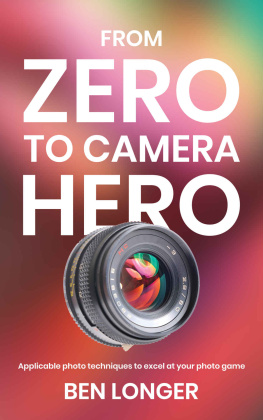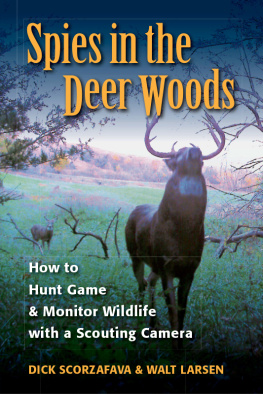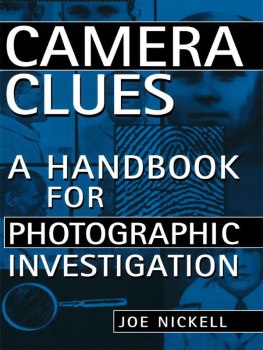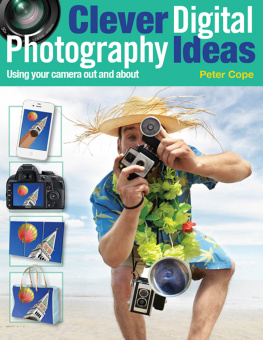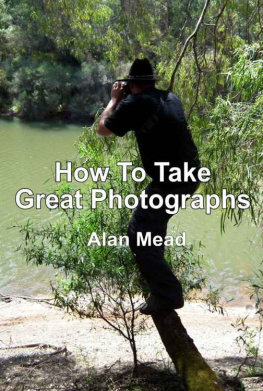Camera Trapping for Wildlife Research
Camera Trapping for Wildlife Research
Edited by
Francesco Rovero and Fridolin Zimmermann
DATA IN THE WILD
Pelagic Publishing | www.pelagicpublishing.com
Published by Pelagic Publishing
www.pelagicpublishing.com
PO Box 725, Exeter EX1 9QU, UK
Camera Trapping for Wildlife Research
ISBN 978-1-78427-048-3 (Pbk)
ISBN 978-1-78427-063-6 (Hbk)
ISBN 978-1-78427-064-3 (ePub)
ISBN 978-1-78427-065-0 (Mobi)
ISBN 978-1-78427-066-7 (PDF)
Copyright 2016 Francesco Rovero and Fridolin Zimmermann
This book should be cited as Rovero, F. and Zimmermann, F. (2016) Camera Trapping for Wildlife Research. Exeter: Pelagic Publishing, UK.
All rights reserved. No part of this document may be produced, stored in a retrieval system, or transmitted in any form or by any means, electronic, mechanical, photocopying, recording or otherwise without prior permission from the publisher. While every effort has been made in the preparation of this book to ensure the accuracy of the information presented, the information contained in this book is sold without warranty, either express or implied. Neither the author, nor Pelagic Publishing, its agents and distributors will be held liable for any damage or loss caused or alleged to be caused directly or indirectly by this book.
British Library Cataloguing in Publication Data
A catalogue record for this book is available from the British Library.
The data in this book belong to the authors of the corresponding chapters and any further analyses or publications should not be undertaken without the approval of the authors.
RECONYX and Hyperfire are trademarks of RECONYX Inc., for more information visit www.reconyx.com. Cuddeback is a trademark of Non Typical, Inc., for more information visit www.http://cuddeback.com. ArcGis is a trademark of Esri Inc., for more information visit http://www.esri.com. Excel is a trademark of the Microsoft Corporation, for more information visit www.microsoft.com.
Cover image: Leopard (Panthera pardus) camera trapped in lowland rainforest in the Udzungwa Mountains of Tanzania (Rasmus Gren Havmller and Francesco Rovero).
Contents
Francesco Rovero and Fridolin Zimmermann
Francesco Rovero and Fridolin Zimmermann
Fridolin Zimmermann and Francesco Rovero
Eric Fegraus and James MacCarthy
Francesco Rovero and Daniel Spitale
Francesco Rovero and Daniel Spitale
Fridolin Zimmermann and Danilo Foresti
Fridolin Zimmermann, Danilo Foresti and Francesco Rovero
Simone Tenan
Jorge A. Ahumada, Timothy G. OBrien, Badru Mugerwa and Johanna Hurtado
Paul Meek and Fridolin Zimmermann
Francesco Rovero (francesco.rovero@muse.it) is an ecologist and conservation scientist with a PhD in animal ecology. He is currently the Curator for Tropical Biodiversity at MUSE Science Museum in Trento, Italy. He has conducted ecological research since the early 2000s on tropical rainforest mammals and made extensive use of camera trapping for his research, with focus on ecological modelling and applications of this tool to the long-term monitoring of species and communities. In 2005 he discovered, using camera traps, a new species of mammal, the grey-faced sengi or elephant shrew, in the remote forests of the Udzungwa Mountains in Tanzania. He has also been involved in camera trapping studies on large mammals in the eastern Alps, the Amazon and Mongolia.
Fridolin Zimmermann (f.zimmermann@kora.ch) is a carnivore conservation scientist with a PhD on Eurasian lynx conservation and ecology. He is currently coordinator of the large carnivore monitoring in Switzerland at Carnivore Ecology and Wildlife Management (KORA). He made extensive use of camera trapping for his research, since 2002 focusing mainly on abundance and density estimations of Eurasian lynx in different reference areas across Switzerland. He provided his expertise in several Eurasian lynx camera trapping projects abroad, including the Bavarian forest, Scandinavia, the Balkans, the Carpathian Mountains, southwestern Asia and the Himalayas. He has also been involved in Eurasian lynx radiotelemetry projects in the Jura Mountains and northwestern Swiss Alps and live captures of animals for translocation programmes.
Jorge A. Ahumada, Tropical Ecology, Assessment & Monitoring Network, Conservation International, 2011 Crystal Drive, Suite 500, Arlington, VA 22202 USA (). Jorge is an ecologist by training and the Executive Director of the Tropical Ecology Assessment and Monitoring Network (TEAM) at Conservation International.
Eric Fegraus, Tropical Ecology, Assessment & Monitoring Network, Conservation International, 2011 Crystal Drive, Suite 500, Arlington, VA 22202 USA (). Eric has a hybrid environmental and IT background and is interested in the design and development of technical tools and products relevant to the natural and social sciences.
Danilo Foresti, Ufficio della caccia e della pesca, Repubblica e Canton Ticino, Via F. Zorzi 13, 6500 Bellinzona, Switzerland; KORA, Thunstrasse 31, 3074 Muri bei Bern, Switzerland (). Danilo is a research assistant in the public administration of Ticino, Switzerland. His professional activity includes the management of fishery resources, the restoration of aquatic habitats and the monitoring of terrestrial wildlife.
Johanna Hurtado Astaiza, Organization for Tropical Studies, La Selva Biological Station, 676-2050 Puerto Viejo de Sarapiqui, Costa Rica (). Johanna is a conservation biologist and the TEAM Costa Rican Site manager. Her research focus is on terrestrial vertebrate monitoring and management.
James MacCarthy, Tropical Ecology, Assessment & Monitoring Network, Conservation International, 2011 Crystal Drive, Suite 500, Arlington, VA 22202 USA (). Jimmy is a conservation biologist and data manager that is interested in improving conservation decisions through the use of science and technology.
Paul Meek, New South Wales Department of Primary Industries, University of New England, Suite 5, Level 1, Coffs Harbour, NSW, Australia. (). Paul is a terrestrial ecologist with an interest in vertebrate pest management, his research focus is on Australian predator ecology and population monitoring techniques.
Badru Mugerwa, Institute of Tropical Forest Conservation (ITFC), Mbarara University of Science and Technology (MUST), Mbarara, Uganda, PO Box. 44, Kabale, Uganda; Department of Biology, Western University, 1151 Richmond Street, London, Ontario, Canada, N6A 5B7; Wildlife Conservation Research Unit (WildCRU), University of Oxford, UK. The Recanati-Kaplan Center, Tubney House, Abingdon Road, Tubney, Abingdon OX13 5QL, UK (). Badru is a conservation biologist whose research investigates the role of human presence/activity on wildlife behavior and their conservation in human-dominated landscapes.
Timothy G. OBrien, Wildlife Conservation Society, Bronx, NY 10460 (). Tim is an ecologist and statistician with a wide range of interests, including hornbills, large cats, and monitoring of mammal communities.
Daniel Spitale, Tropical Biodiversity Section, MUSE Museo delle Scienze, Corso del Lavoro e della Scienza 3, 38122 Trento Italy (daniel.spitale@muse.it). Daniel is an ecologist with broad interests including statistic, bryology, limnology, biogeography and community ecology. He is both a freelance researcher working for different institutions and an environmental consultant.


